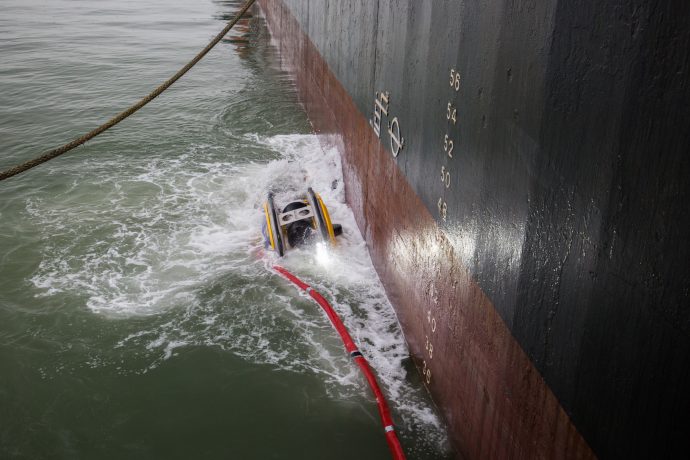The worldwide commercial shipping fleet sailing our oceans on any given day has grown over the last decade, from around 5,000 ships in 2011 to 6,000 ships in 2022. And while the maritime industry is crucial to international trade and economic growth, it is also a major contributor to the harmful emissions causing climate change.

So, as global shipping grows, it brings with it a greater increase in maritime emissions, currently accounting for about 3% of total amount of greenhouse gas (GHG) released into the atmosphere every year. Without sustainable intervention, ship-sourced pollutants could account for up to 13% of global emissions in the coming years. And one of the factors behind that escalation is the impact of fouling accumulated on ship hulls.
Foul play
Typically, biofouling begins the minute a ship enters the water. Microorganisms and other marine life such as algae, mollusks and barnacles attach to the ship’s hull and other surfaces and begin to grow. It can happen within a matter of hours or days, depending on the environmental conditions such as temperature, salinity and nutrient levels.
As the organisms grow and multiply, they create a layer of biofilm which provides a surface for other marine life to attach and grow. Over time, this build-up of biofouling can cause corrosion and other forms of damage to the hull, the spread of invasive species and, crucially, decreased performance efficiency.
Green regulations
The regulatory landscape for biofouling in shipping has been established by the International Maritime Organisation (IMO), an agency of the United Nations responsible for regulating shipping. It has established guidelines for the proactive management of biofouling to mitigate damage caused through ships' ballast water and on their hulls, including the development of a Biofouling Management Plan and regular cleaning and maintenance of ship hulls.
Some countries have unilaterally introduced their own regulations and requirements, including: the United States' Nonindigenous Aquatic Nuisance Prevention and Control Act; the European Union's Regulation on the Prevention of the Introduction and Spread of Invasive Alien Species; Australia’s National Biofouling Management Guidelines for ships visiting Australian ports; and the Biofouling Management Requirements for ships calling at New Zealand ports.
The growing focus on eco-friendly and sustainable shipping practices in response to shipping regulations and environmental concerns underlines the importance of regular hull cleaning and opting for the right method to get the desired results in an environmentally-friendly way.
Dollars and sense
Fuel represents a significant portion – anywhere from 50-70% – of a ship’s operational costs. And with the wild fluctuations of fuel prices in recent years, such cost considerations are at the top of the agenda for owners and operators.
Cleaning hulls regularly helps to make long-term fuel savings, reduce maintenance expenses throughout the ship's lifespan, extend hull lifespan due to fewer costly repairs, reduce time spent in dry dock, and improve speed, maneuverability and stability.

Green hull cleaning solutions eliminate potential harm caused to the environment during the cleaning of ships. Important factors to consider when choosing your hull cleaning method include:
Charting a new course
The eco-friendly hull cleaning landscape is focused on reducing the negative impact of biofouling on the marine environment and the shipping industry through the use of environmentally friendly cleaning solutions and practices, as well as increased regulatory oversight to ensure compliance with biofouling regulations. What’s more, their use can have a positive impact on financial and reputational health.
As awareness of the need for sustainable shipping practices grows, eco-friendly hull cleaning will play an increasingly important role.
GAC works with HullWiper at key locations around the world to offer eco-friendly hull cleaning services using its patented Remotely Operated Vehicle which uses sea water under pressure to dislodge fouling rather than traditional abrasive methods, and collects removed debris for safe disposal once ashore.